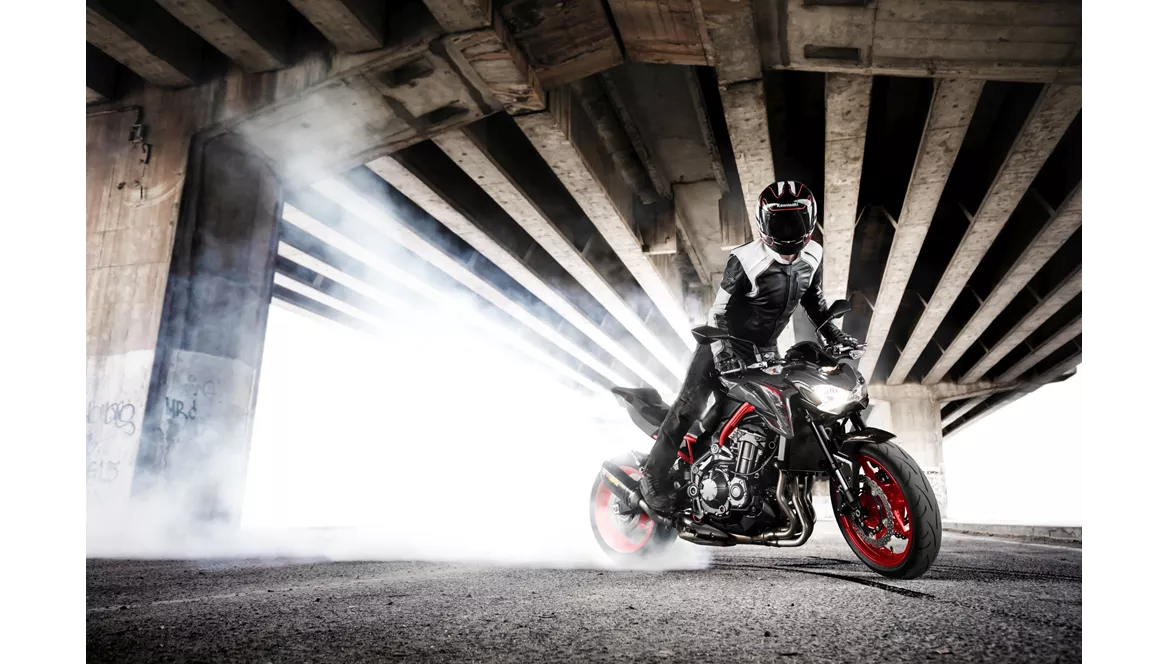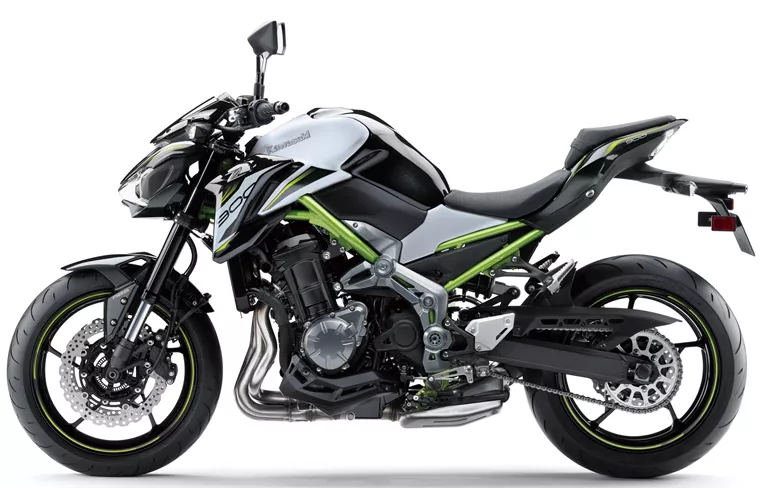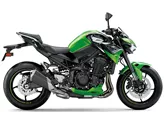Kawasaki Z900 2019 vs. Suzuki GSX-S1000 2022

Kawasaki Z900 2019

Suzuki GSX-S1000 2022
Overview - Kawasaki Z900 2019 vs Suzuki GSX-S1000 2022
The Kawasaki Z900 2019 and the Suzuki GSX-S1000 2022 are both naked bikes that offer powerful performance and exciting riding experiences. However, there are several key differences between the two models.
In terms of engine power, the Suzuki GSX-S1000 2022 takes the lead with 152 HP, compared to the Kawasaki Z900 2019's 125.4 HP. This gives the Suzuki a significant advantage in terms of acceleration and top speed. The Suzuki also has a higher torque rating of 106 Nm, compared to the Kawasaki's 98.6 Nm, which further enhances its performance capabilities.
Both bikes feature inline 4-cylinder engines with liquid cooling and fuel injection systems, ensuring efficient and reliable performance. However, the Suzuki GSX-S1000 2022 has a larger displacement of 999cc, compared to the Kawasaki Z900 2019's 948cc, which may contribute to its higher power output.
In terms of suspension, both bikes feature upside-down telescopic forks at the front and swing arm suspensions with monoshocks at the rear. However, the Suzuki GSX-S1000 2022 offers more adjustability with compression, preload, and rebound adjustments for both the front and rear suspensions. This allows riders to fine-tune the suspension settings to their preferences and riding conditions.

Kawasaki Z900 2019
When it comes to the chassis, the Suzuki GSX-S1000 2022 has an aluminum frame, while the Kawasaki Z900 2019 features a steel frame. The aluminum frame of the Suzuki is generally considered to be lighter and more rigid, which can contribute to better handling and maneuverability.
In terms of braking performance, both bikes feature double disc brakes at the front with four-piston calipers. However, the Suzuki GSX-S1000 2022 has larger diameter discs (310mm) and utilizes radial, monoblock calipers, which can provide improved stopping power and more precise braking control.
In terms of rider assistance systems, the Suzuki GSX-S1000 2022 offers a more comprehensive package. It includes ABS, riding modes, ride by wire, a shift assistant with blipper, and traction control. The Kawasaki Z900 2019, on the other hand, only offers ABS.

Suzuki GSX-S1000 2022
In terms of dimensions and weights, the Suzuki GSX-S1000 2022 has a slightly longer wheelbase of 1460mm, compared to the Kawasaki Z900 2019's 1450mm. The seat height of the Suzuki is also slightly higher at 810mm, compared to the Kawasaki's 795mm. Both bikes have similar front and rear tire widths and diameters. However, the Suzuki GSX-S1000 2022 has a wider rear tire at 190mm, compared to the Kawasaki Z900 2019's 180mm.
In terms of weaknesses, the Kawasaki Z900 2019 has a TFT display that is mounted too low, making it less visible while riding. The menu operation on the Kawasaki is also cumbersome and may require more effort to navigate. Additionally, the rearview mirrors on the Kawasaki offer modest visibility.
On the other hand, the Suzuki GSX-S1000 2022 has a less comprehensive electronics package compared to some of its competitors. It lacks a 6-axis IMU and cornering ABS, which may limit its advanced safety features. The instruments on the handlebars are also somewhat antiquated, and the display may not be particularly easy to read.
In conclusion, both the Kawasaki Z900 2019 and the Suzuki GSX-S1000 2022 offer exciting performance and enjoyable riding experiences. The Suzuki has a more powerful engine, a more advanced electronics package, and a slightly more modern design. However, the Kawasaki offers a lighter and more stable handling experience, a comfortable seating position, and a fair price. Ultimately, the choice between the two models will depend on individual preferences and priorities.
Technical Specifications Kawasaki Z900 2019 compared to Suzuki GSX-S1000 2022
Pros and Cons in comparison
Pros and Cons in comparison
Kawasaki Z900 2019

Fortunately, the new Kawasaki Z900 has lost none of its character through the use of electronics. It is and remains a playful mid-range naked bike, which at the same time masters the brisk pace on the country road magnificently. The riding pleasure and suitability for everyday use are high, the now installed riding aids offer a plus in safety. Your opponents will have a really hard time from now on.
Suzuki GSX-S1000 2022

The new GSX-S1000 is an old acquaintance in terms of basic design - the engine and chassis are still from the predecessor. However, the machine has been modernised in many areas and presents itself at an extremely high level, especially visually. Although the engine cannot compete in the league of the super-potent Hyper Nakeds, it functions very harmoniously and powerfully enough. The conventional chassis also strikes a successful compromise between sportiness and comfort. The hammer arguments are definitely the successful design, the standard quickshifter with blipper and, last but not least, the comparatively low price.
Price Comparison Avarage Market Price Kawasaki Z900 vs Suzuki GSX-S1000
There are a few key differences between a Kawasaki Z900 2019 and a Suzuki GSX-S1000 2022. In terms of price, the actual average price of a Suzuki GSX-S1000 2022 is about 35% higher. A Kawasaki Z900 2019 experiences a loss of 230 USD in one year of ownership. This is offset by a loss of 1,510 USD for a Suzuki GSX-S1000 2022. Compared to Suzuki GSX-S1000 2022 there are more Kawasaki Z900 2019 bikes available on the 1000PS.de Marketplace, specifically 40 compared to 28. It takes less time to sell a Kawasaki Z900 with 116 days compared to 130 days for a Suzuki GSX-S1000. Since model year 2017 1000PS.de editors have written 46 reviews for the Kawasaki Z900 and 36 reviews for the Suzuki GSX-S1000 since model year 2015. The first review for the Kawasaki Z900 was published on 11/11/2016 and now has more than 93,200 views. This compares to more than 17,100 views for the first review on Suzuki GSX-S1000 published on 9/27/2014.



















